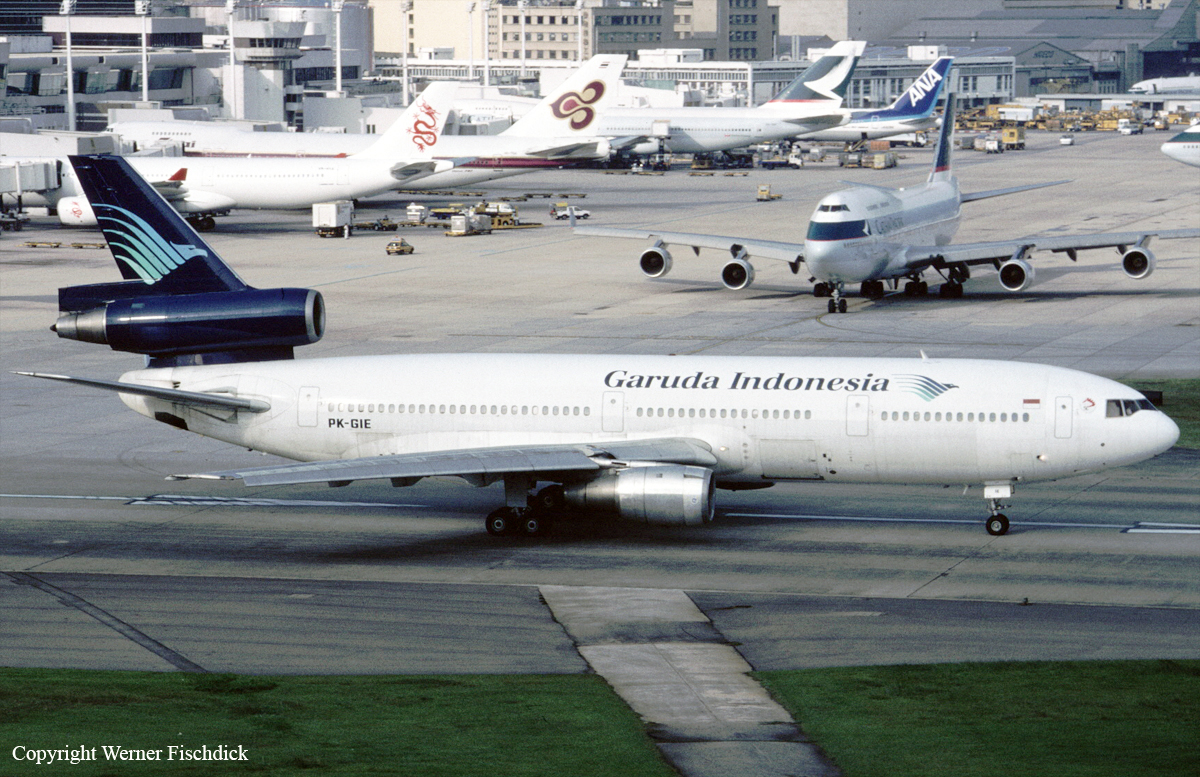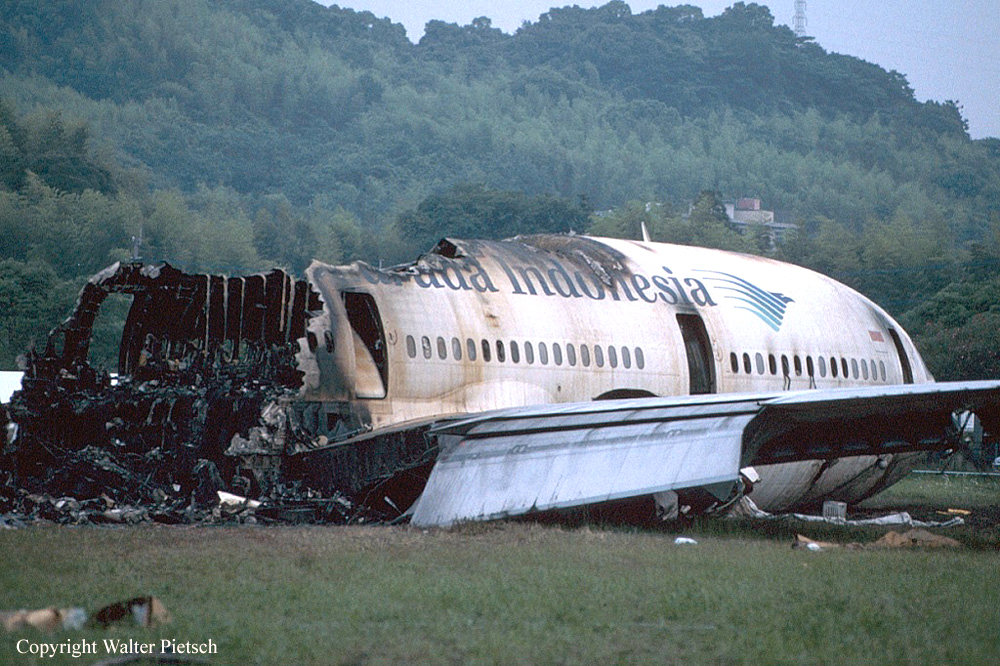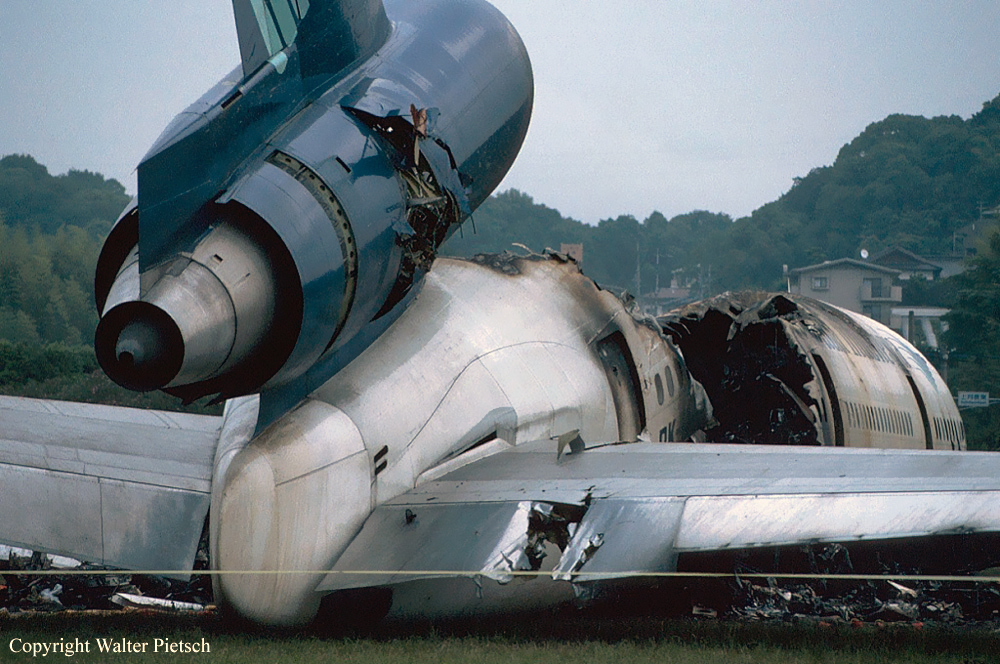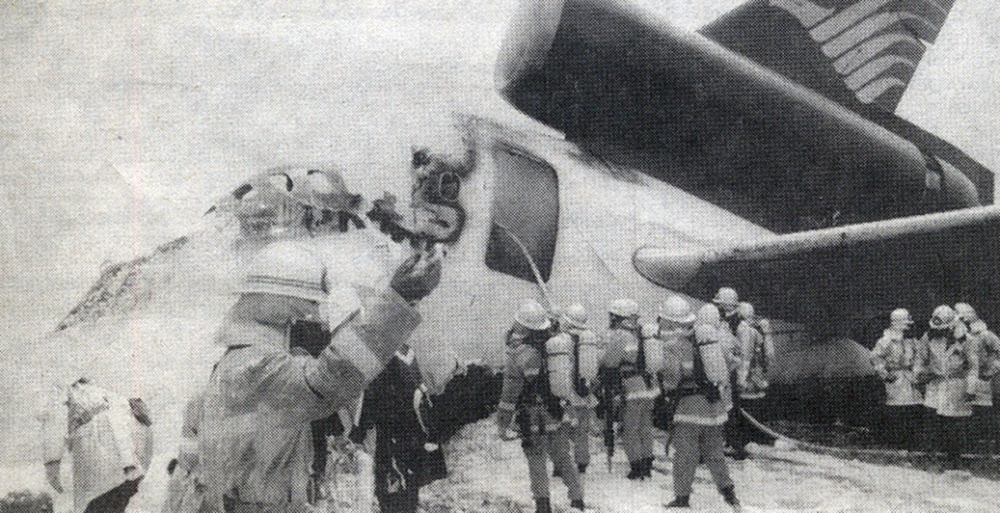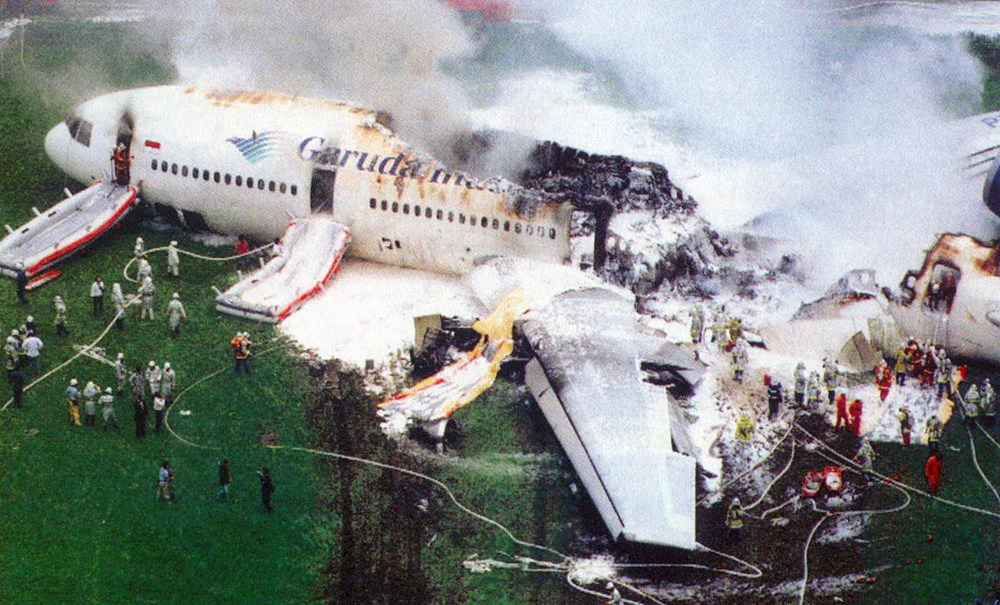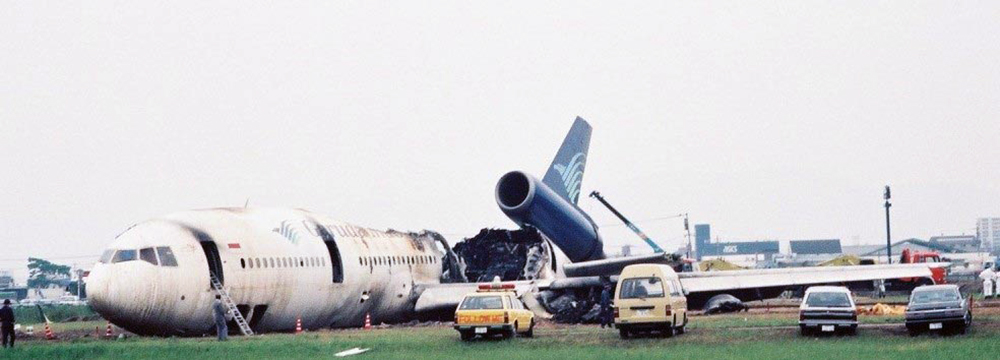Country
Ground fire of a Douglas DC-10-10CF in Newburgh
Date & Time:
Sep 5, 1996 at 0554 LT
Registration:
N68055
Survivors:
Yes
Schedule:
Memphis - Boston
MSN:
47809
YOM:
1975
Flight number:
FDX1406
Crew on board:
3
Crew fatalities:
Pax on board:
2
Pax fatalities:
Other fatalities:
Total fatalities:
0
Captain / Total hours on type:
2504.00
Copilot / Total hours on type:
1101
Aircraft flight hours:
38271
Aircraft flight cycles:
17818
Circumstances:
The airplane was at FL 330 when the flightcrew determined that there was smoke in the cabin cargo compartment. An emergency was declared and the flight diverted to Newburgh/Stewart International Airport and landed. The airplane was destroyed by fire after landing. The fire had burned for about 4 hours after after smoke was first detected. Investigation revealed that the deepest and most severe heat and fire damage occurred in and around container 06R, which contained a DNA synthesizer containing flammable liquids. More of 06R's structure was consumed than of any other container, and it was the only container that exhibited severe floor damage. Further, 06R was the only container to exhibit heat damage on its bottom surface, and the area below container 06R showed the most extensive evidence of scorching of the composite flooring material. However, there was insufficient reliable evidence to reach a conclusion as to where the fire originated. The presence of flammable chemicals in the DNA synthesizer was wholly unintended and unknown to the preparer of the package and shipper. The captain did not adequately manage his crew resources when he failed to call for checklists or to monitor and facilitate the accomplishment of required checklist items. The Department of Transportation hazardous materials regulations do not adequately address the need for hazardous materials information on file at a carrier to be quickly retrievable in a format useful to emergency responders.
Probable cause:
An in-flight cargo fire of undetermined origin.
Final Report:
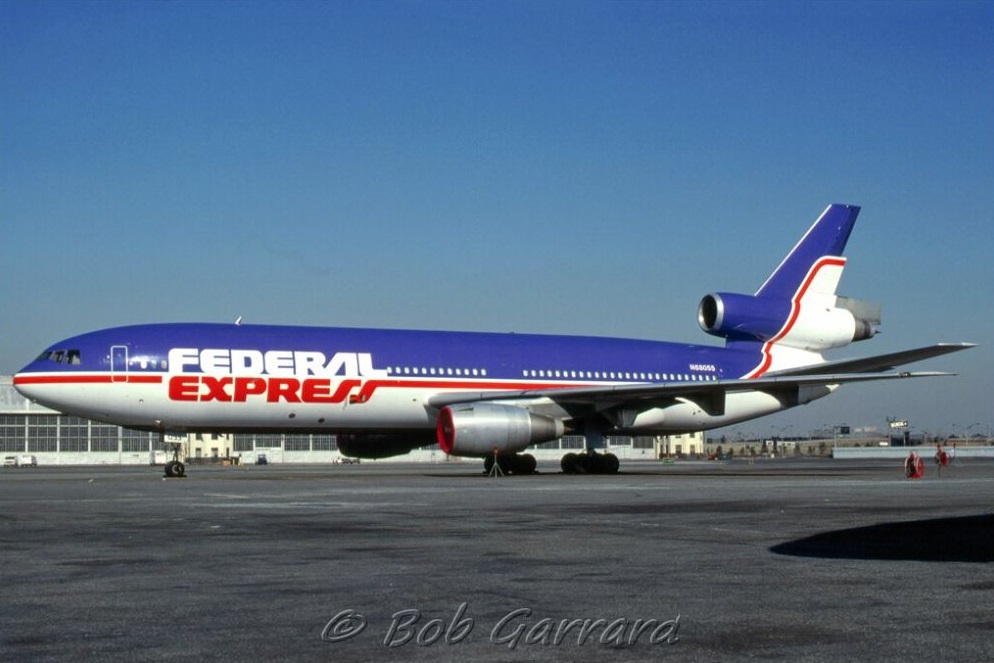
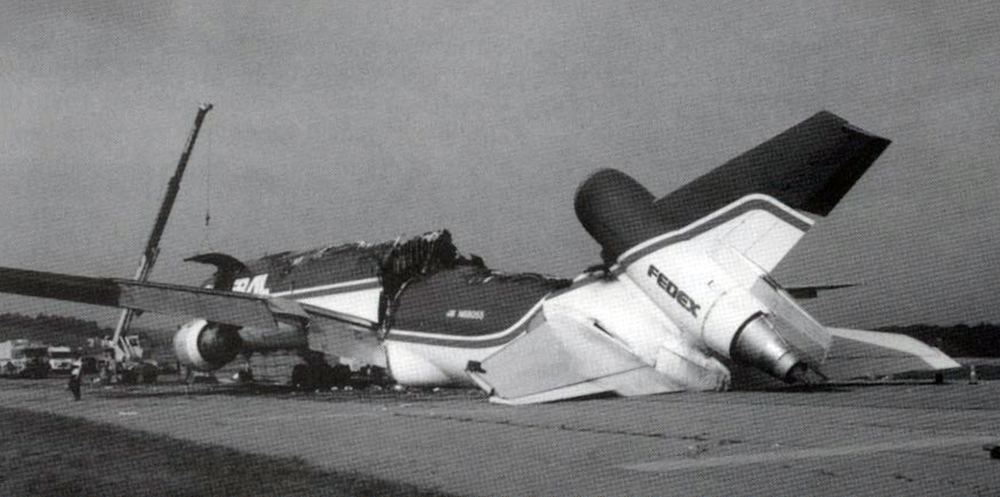

Crash of a Douglas DC-10-30 in Fukuoka: 3 killed
Date & Time:
Jun 13, 1996 at 1208 LT
Registration:
PK-GIE
Survivors:
Yes
Schedule:
Fukuoka – Denpasar – Jakarta
MSN:
46685
YOM:
1979
Flight number:
GA865
Crew on board:
15
Crew fatalities:
Pax on board:
260
Pax fatalities:
Other fatalities:
Total fatalities:
3
Captain / Total hours on type:
2641.00
Copilot / Total hours on type:
1437
Aircraft flight hours:
46325
Circumstances:
During the takeoff roll at Fukuoka-Itazuke Airport runway 16, at a speed of 158 knots, the captain started the rotation. During initial climb, at a height of about 3 metres, the right engine suffered a loss of power after a fan blade located on the 1st stage of the high pressure compressor disk separated. The N1 dropped to 23,7% and five seconds later, the flight engineer informed the crew about the failure of the engine n°1. The captain decided to abort the takeoff and landed back on runway. The aircraft contacted ground with a vertical acceleration of 2,1 g then thrust reversers were deployed and ground spoilers were extended. Unable to stop within the remaining distance, the aircraft overran, crossed a road, skidded for about 620 metres before coming to rest in an open field, bursting into flames. Three passengers were killed.
Probable cause:
Although the CAS was well in excess of V1 and the aircraft had already lifted off from the runway, the takeoff was aborted. Consequently the aircraft departed the end of the runway, came to rest and caught fire. It is estimated that contributing to the rejection of the takeoff under this circumstance was the fact that the CAP's judgement in the event of the engine failure was inadequate. Investigation revealed that the turbine blade that failed, had operated for 30913 hours and 6182 cycles. General Electric had advised customers to discard blades after about 6000 cycles.
Final Report:
